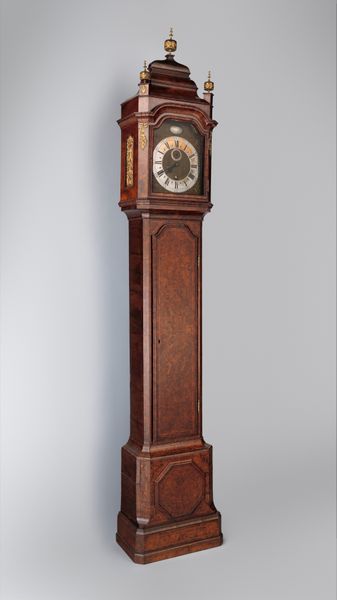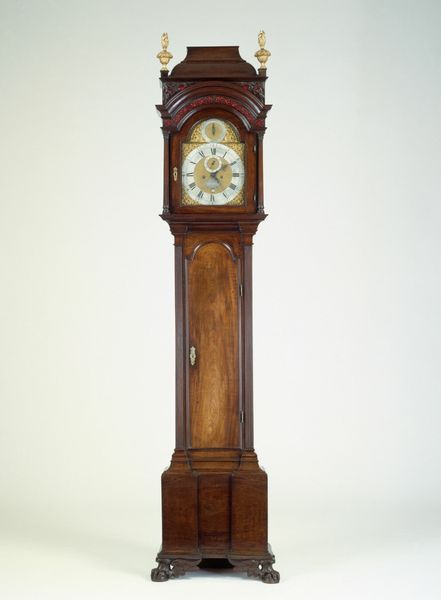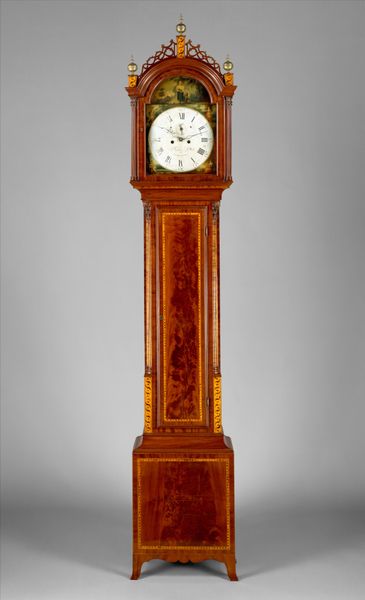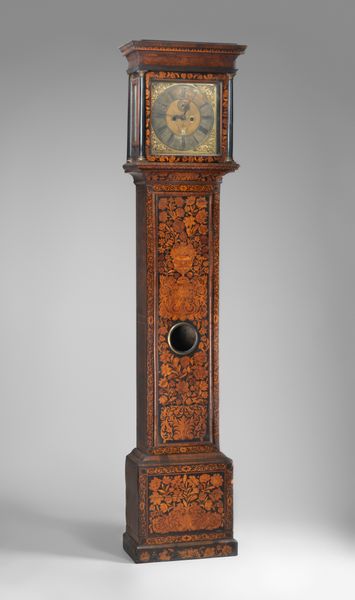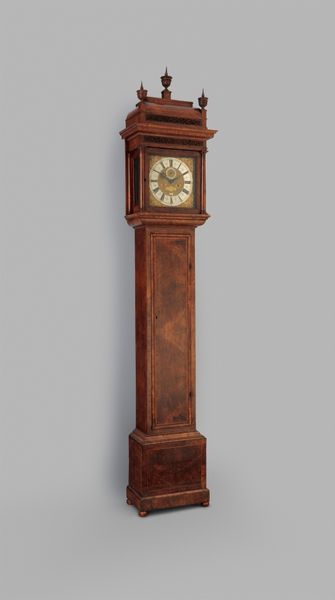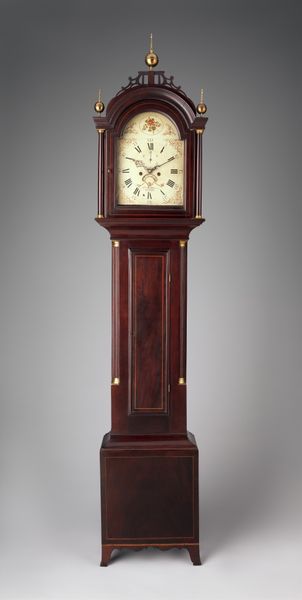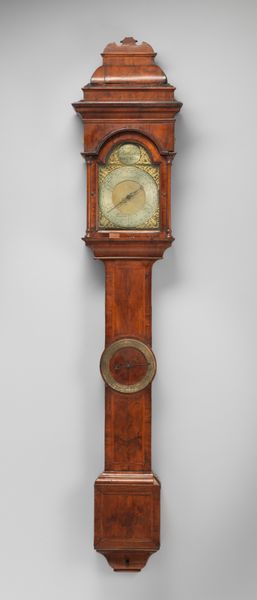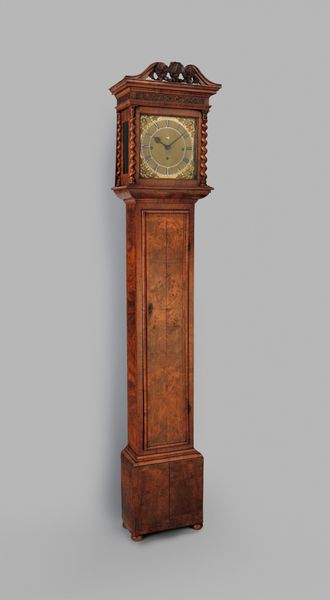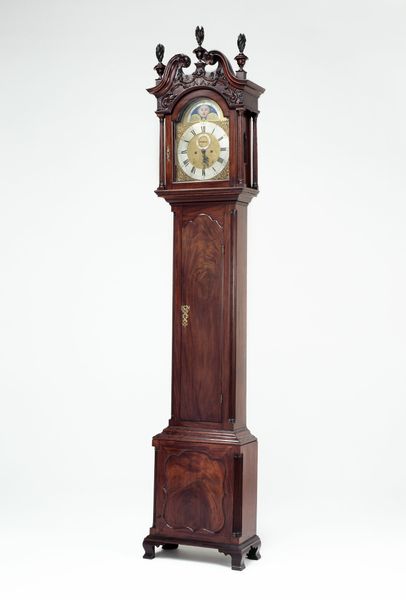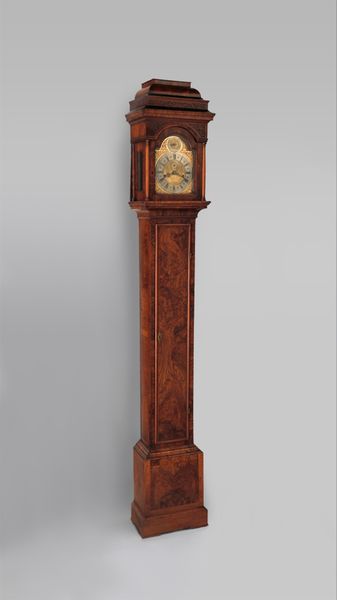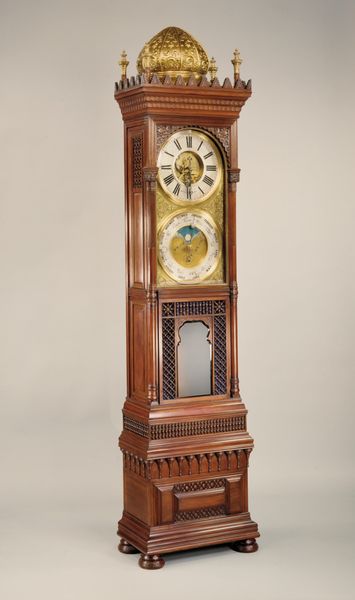
carving, sculpture, wood
#
neoclacissism
#
carving
#
furniture
#
sculpture
#
wood
#
decorative-art
Dimensions: Overall: 101 × 18 × 9 1/8 in. (256.5 × 45.7 × 23.2 cm)
Copyright: Public Domain
This longcase clock was crafted by Thomas Dickenson around the turn of the 19th century, primarily from mahogany. The beauty of the piece is the product of carefully considered materials and a labor-intensive process. Mahogany, favored for its rich color and workability, was first sawn into planks. The cabinetmaker skillfully planed, joined, and veneered the wood, accentuating its natural grain. Brass embellishments were likely cast and polished separately, then carefully inlaid, requiring precision and patience. The clock's face, probably enameled, involved the expertise of yet another specialist. The clock represents more than just telling time; it embodies status, achieved through specialized labor and global trade networks that made mahogany available. This object challenges the idea that craft is somehow separate from fine art. It is a testament to the deep social and economic forces that shape the objects we live with.
Comments
No comments
Be the first to comment and join the conversation on the ultimate creative platform.
